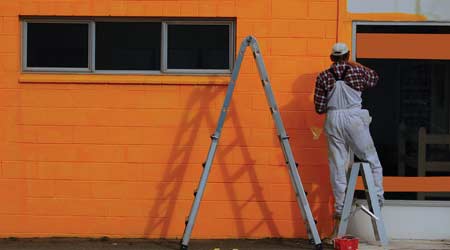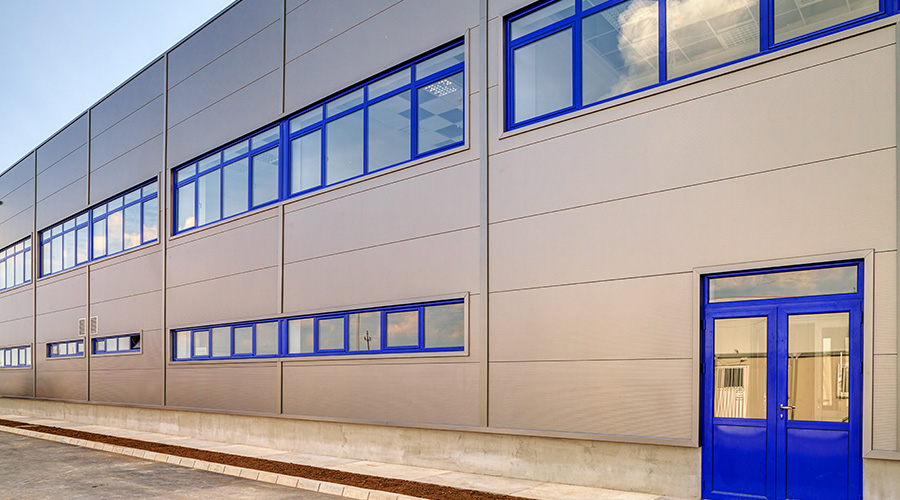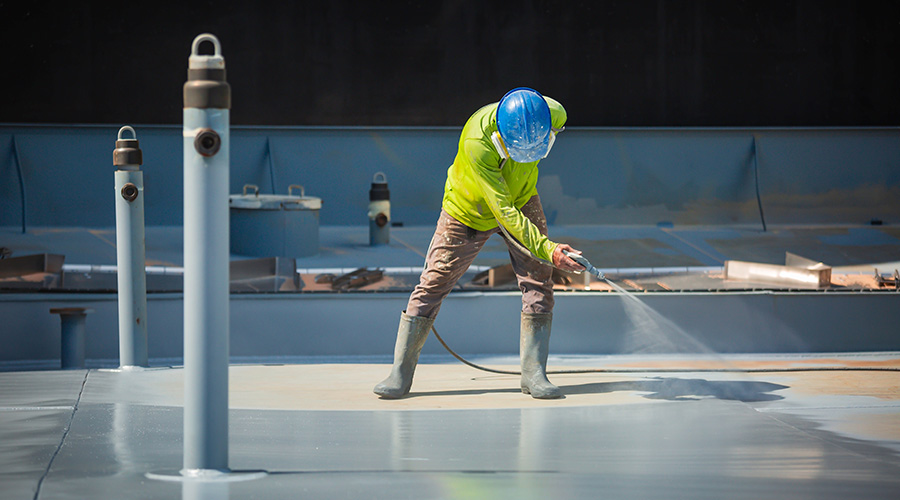 Painters dealing with an array of substrates should plan projects with preparation, application and cleanup in mind in order to produce quality, lasting jobs.
Painters dealing with an array of substrates should plan projects with preparation, application and cleanup in mind in order to produce quality, lasting jobs.Common Substrates for Paints and Coatings
By understanding paint and coating options and surface challenges, managers can deliver successful applications
Painters dealing with an array of substrates throughout facilities should approach application projects with a combination of preparation, application and cleanup in order to produce a quality, lasting job. Among the considerations for various common substrates are these:
Drywall. Workers need to set nail pops below the surface with a nail set and hammer or, in the case of screws, with a screwdriver, then spackle over them to fill the hole and sand them smooth. If water damage or insufficient fasteners have caused bulges, workers need to replace the damaged area after correcting the root cause.
A mold-removing fog bomb might be necessary to kill mold and prevent its return. Workers need to tape and coat joints with several layers of joint compound, then sand them smooth. Repair work leaves a coating of dust that workers need to remove to provide a dust-free, smooth and dry surface for painting.
Wood. After using plastic wood filler or putty according to manufacturer instructions to fill gouges and cracks, workers need to sand wood trim, door and window frames, and floors. They can remove floor stains and old varnish with a power sander. If the old surface is gloss or semi-gloss paint or varnish, they will need to remove the gloss by sanding.
Deep stains might require oxalic acid treatment to remove them and bring out the original grain. The surface must be wiped down with a cloth saturated with paint thinner to remove dirt and sanding dust. Then let it dry. Workers should coat wood floors a highly abrasion-resistant varnish or long-lasting polyurethane finish.
Metal. Steel substrate categories include: ready to paint or intact mill scale; rusted mill scale; 100 percent rusted with no pits; rusted and pitted with the paint mostly intact; zinc-rich paint; and deteriorated paint over mill scale.
If the surface is oil-free, dry, clean and tight after preparation, the paint will adhere well. Painters must clean intact mill scale and partially rusted mill scale using a wire brush, chipping hammer and grinder combination to remove loose scale and rust. Then they need to wipe the surface with paint thinner to remove oil, applying the primer to the clean, dry surface.
A surface with rusted mill scale will take more work, but the method is the same. Binders in the primer adhere tightly to the clean surface to provide a good base for the topcoat. I-beams, H-columns, flats, angle iron and channel iron can be stored outside for a long time with just the primer to protect them.
Masonry. New masonry must set for 30 days before a coating application. All masonry is porous and subject to moisture and mold. Managers can choose from among coatings for exterior floor, walls, stucco, driveways and interior underground floors and walls.
To prepare the surface, workers can pressure-wash it with cleaner to remove dirt, dust, mold, loose or chipped coating, mildew and stains. Masonry paints contain fillers that will fill cement block and other uncoated, porous masonry. After cleaning, applying a matching coating for the surface — such as acrylic latex for stucco — provides a durable, weather-proof finish. Managers also can specify coatings with high mold and mildew resistance and antimicrobial coatings.
Related Topics:














